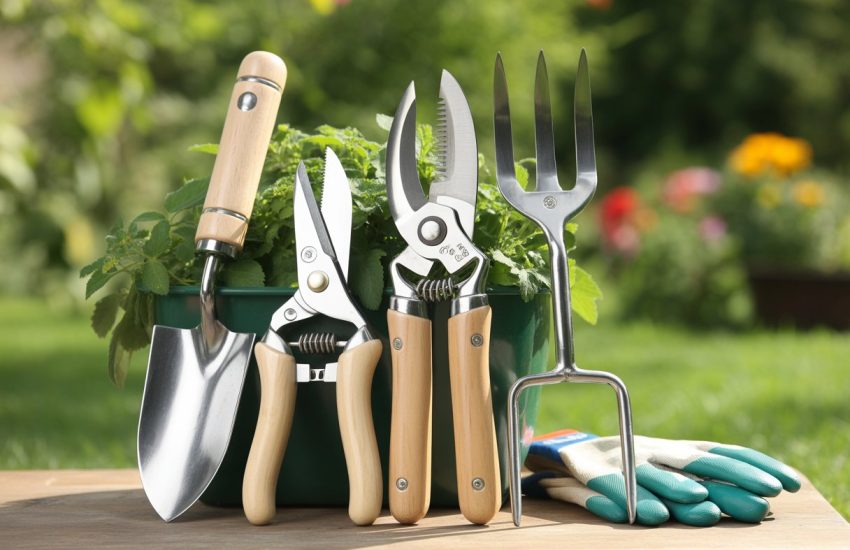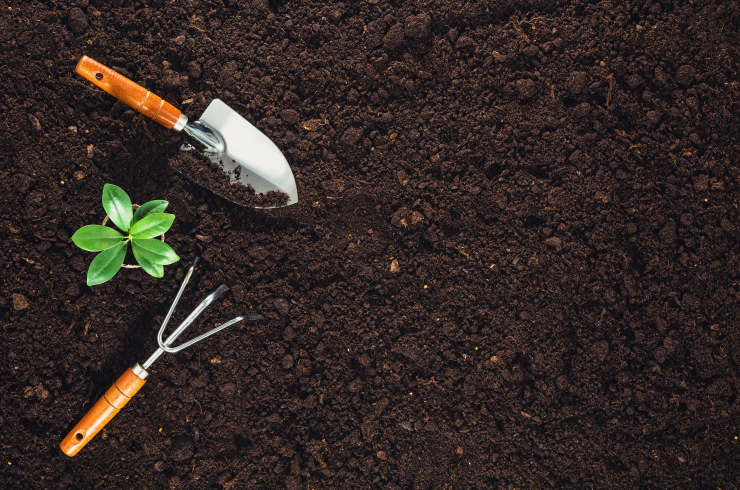Canna Lily Care in Winter: Tips and Tricks
Canna lilies are a popular choice for gardeners due to their striking foliage and vibrant blooms. However, caring for these plants during the winter months can be a challenge. In this article, we will discuss the best practices for canna lily care in winter to ensure that your plants survive and thrive.

One of the most important aspects of canna lily care in winter is preparing the plants for the cold weather. This involves cutting back the foliage and removing any dead or diseased material. It is also important to mulch around the base of the plant to protect the roots from freezing temperatures.
Another key consideration for canna lily care in winter is providing the right amount of water. While these plants require regular watering during the growing season, they should be allowed to dry out slightly between waterings in the winter. Overwatering can lead to root rot and other issues, so it is important to monitor the soil moisture carefully.
Understanding Canna Lily Winter Care
The Importance of Overwintering
Canna lilies are tropical plants that thrive in warm weather. However, they can still survive the winter months if they are properly cared for. Overwintering canna lilies is important because it helps them survive the cold temperatures and harsh weather conditions.
During the winter months, canna lilies go dormant and stop growing. They need a period of rest to prepare for the next growing season. Overwintering canna lilies involves preparing the plants for winter and providing them with the right conditions to survive until spring.
Canna Lily Hardiness Zones
The hardiness zone of a plant is a measure of its ability to survive cold temperatures. Canna lilies are perennials and can survive in hardiness zones 7-11. If you live in a colder climate, you will need to take extra precautions to ensure your canna lilies survive the winter.
In hardiness zones 7-8, canna lilies can be left in the ground over the winter if they are protected with a layer of mulch. In zones 9-11, canna lilies can be left in the ground without any protection.
If you live in a colder climate, you will need to dig up your canna lilies and store them indoors for the winter. To do this, wait until the first frost has killed the foliage. Cut back the foliage to 6 inches and dig up the rhizomes. Clean the rhizomes and let them dry for a few days. Store them in a cool, dry place until spring.
Overall, understanding canna lily winter care is important for the survival of these tropical plants. By following the proper procedures for overwintering and understanding the hardiness zones, you can ensure that your canna lilies survive the winter and thrive in the spring.
Pre-Winter Preparation
Before the onset of winter, it is essential to prepare Canna Lilies to avoid any damage due to frost and cold weather. This section covers the necessary steps to take to ensure your Canna Lilies are ready for winter.
Pruning and Cleaning
Pruning and cleaning are essential to keep the Canna Lilies healthy and free from any diseases. Before winter, remove any dead or diseased foliage to prevent the spread of diseases. Cut back the stems to about 4-6 inches above the soil level. This will help the plant focus its energy on the rhizomes, which will help it survive the winter.
After pruning, clean up the area around the plant and remove any debris that may have accumulated. This will help reduce the risk of diseases and pests.
Soil and Fertilization
In preparation for winter, it is important to prepare the soil and fertilize the Canna Lilies. The soil should be well-draining to prevent waterlogging, which can cause root rot. Add a layer of mulch to the soil to help regulate the temperature and keep the soil moist.
It is also recommended to fertilize the Canna Lilies before winter. Use a balanced fertilizer with equal amounts of nitrogen, phosphorus, and potassium. Apply the fertilizer according to the instructions on the package.
By following these simple steps, you can ensure your Canna Lilies survive the winter and come back strong in the spring.
Overwintering Techniques
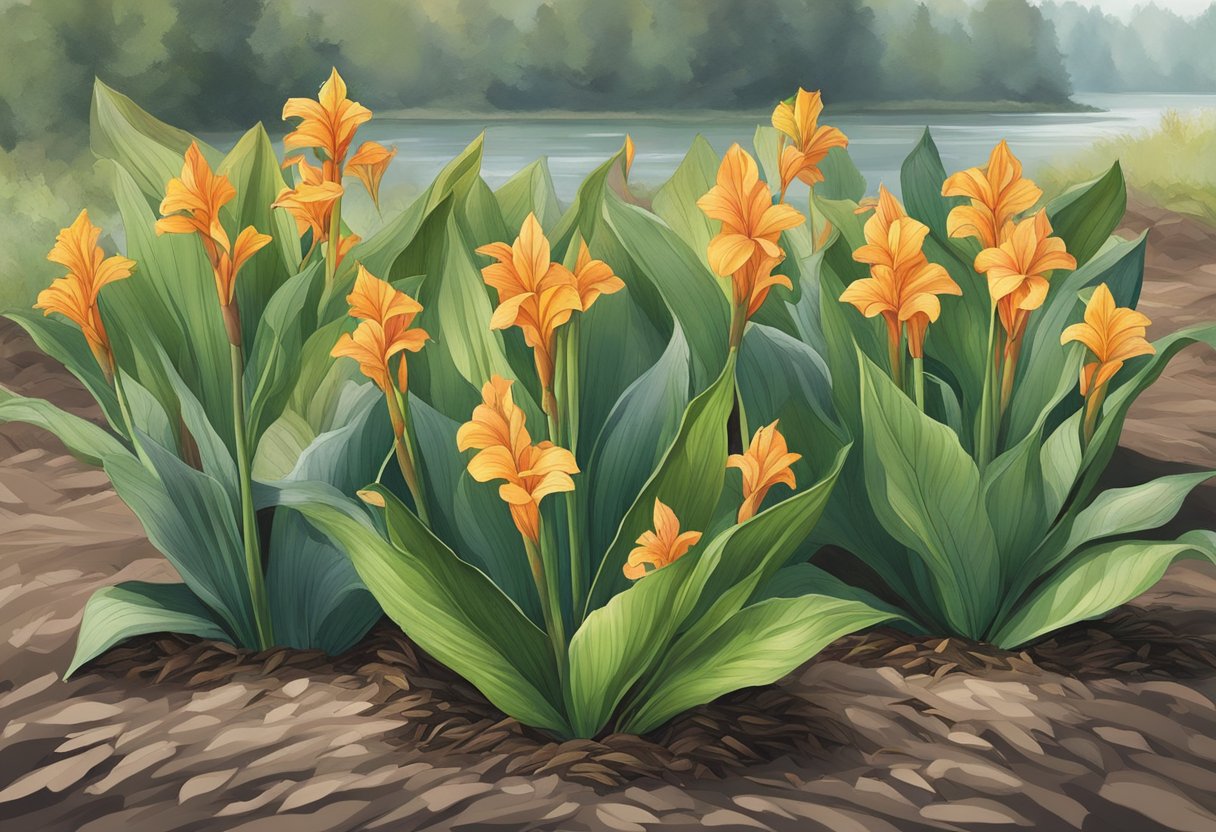
Canna lilies are tropical plants that are not frost-hardy. Therefore, they require special care during the winter months to ensure that they survive until the next growing season. Here are some overwintering techniques for canna lilies.
In-Ground Overwintering
If you live in a climate with mild winters, you can overwinter your canna lilies in the ground. Before the first frost, cut back the foliage to about 6 inches above the ground. Then, cover the rhizomes with a thick layer of mulch, such as straw or leaves. This will help insulate them from the cold and prevent them from freezing.
Container Overwintering
If you grow your canna lilies in containers, you have a few options for overwintering them. One option is to move the containers to a garage or basement that stays above freezing. Before moving them, cut back the foliage and water the plants well. Place the containers in a dark, cool location and check on them periodically to make sure they are not drying out.
Another option is to leave the containers outside and protect them from the cold. Wrap the containers with bubble wrap or burlap to insulate them, and place them in a sheltered location, such as against a wall or under an overhang. You can also cover the top of the soil with a layer of mulch to help insulate the roots.
Indoor Overwintering
If you have the space, you can bring your canna lilies indoors for the winter. Before bringing them inside, cut back the foliage and dig up the rhizomes. Shake off any excess soil and let them dry for a day or two. Then, store them in a cool, dry location, such as a basement or garage. Check on them periodically to make sure they are not drying out.
When spring arrives, you can replant the rhizomes in containers or in the ground, and they will begin to grow again. With proper care, your canna lilies will provide beautiful blooms year after year.
Digging and Storing Rhizomes
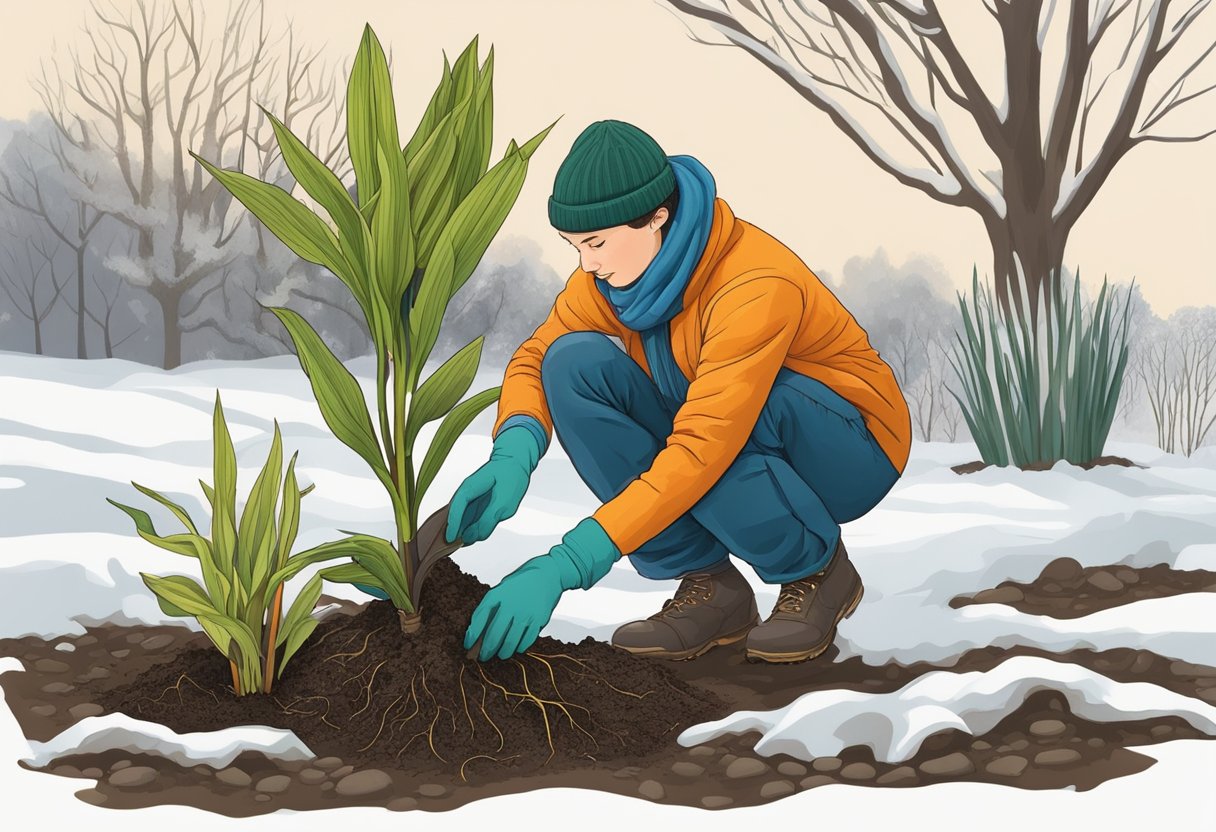
Canna lilies are a popular garden plant, but they are not winter hardy. Therefore, it is necessary to dig up and store the rhizomes before the first frost. Here is what you need to know about digging and storing canna lily rhizomes.
Proper Digging Method
Digging up canna lily rhizomes is a simple process that requires a few basic tools. Start by cutting back the foliage to a few inches above the ground. Then, use a garden fork to gently loosen the soil around the rhizomes. Be careful not to damage the rhizomes as you dig them up.
Once the rhizomes are out of the ground, gently shake off any excess soil. Inspect the rhizomes for any signs of damage or rot. Discard any damaged or rotting rhizomes, as they can spread disease to healthy plants.
Storing Conditions
After digging up the rhizomes, it is important to store them properly to ensure their survival through the winter. Start by removing any remaining foliage and cutting the stems to a few inches. Then, place the rhizomes in a cool, dry location for a few days to allow them to dry out.
Once the rhizomes are dry, wrap them individually in newspaper or place them in a container filled with vermiculite or peat moss. Make sure to label each rhizome with the variety name and color. Store the rhizomes in a cool, dry location with a temperature between 40-50°F and a humidity level of 50-60%. Check the rhizomes periodically throughout the winter to ensure they are not rotting or drying out.
By following these simple steps, you can successfully dig up and store canna lily rhizomes for the winter. Proper storage conditions will ensure healthy plants for next year’s garden.
Caring for Canna Lilies Indoors

Canna lilies are a beautiful addition to any garden, but they can also be grown indoors with proper care. Here are some tips for keeping your canna lilies healthy and thriving indoors.
Light and Temperature Requirements
Canna lilies require bright, indirect light to thrive. They should be placed near a window that receives at least 6 hours of sunlight each day. However, direct sunlight can scorch the leaves, so it’s important to provide some shade during the hottest part of the day.
In terms of temperature, canna lilies prefer a warm environment. They should be kept in a room with a temperature between 60-75°F (15-24°C). Avoid placing them near drafty windows or doors, as this can cause the leaves to wilt.
Watering and Humidity Control
Canna lilies require moist soil to thrive, but they don’t like to sit in standing water. Water your canna lilies when the top inch of soil feels dry to the touch. Be sure to water deeply, so the water reaches the roots.
Humidity is also important for canna lilies. They prefer a humid environment, so it’s a good idea to mist them with water regularly. You can also place a tray of water near the plant to increase humidity levels.
In conclusion, with proper care, canna lilies can thrive indoors. By providing the right amount of light, temperature, water, and humidity, you can enjoy these beautiful plants all year round.
Replanting After Winter
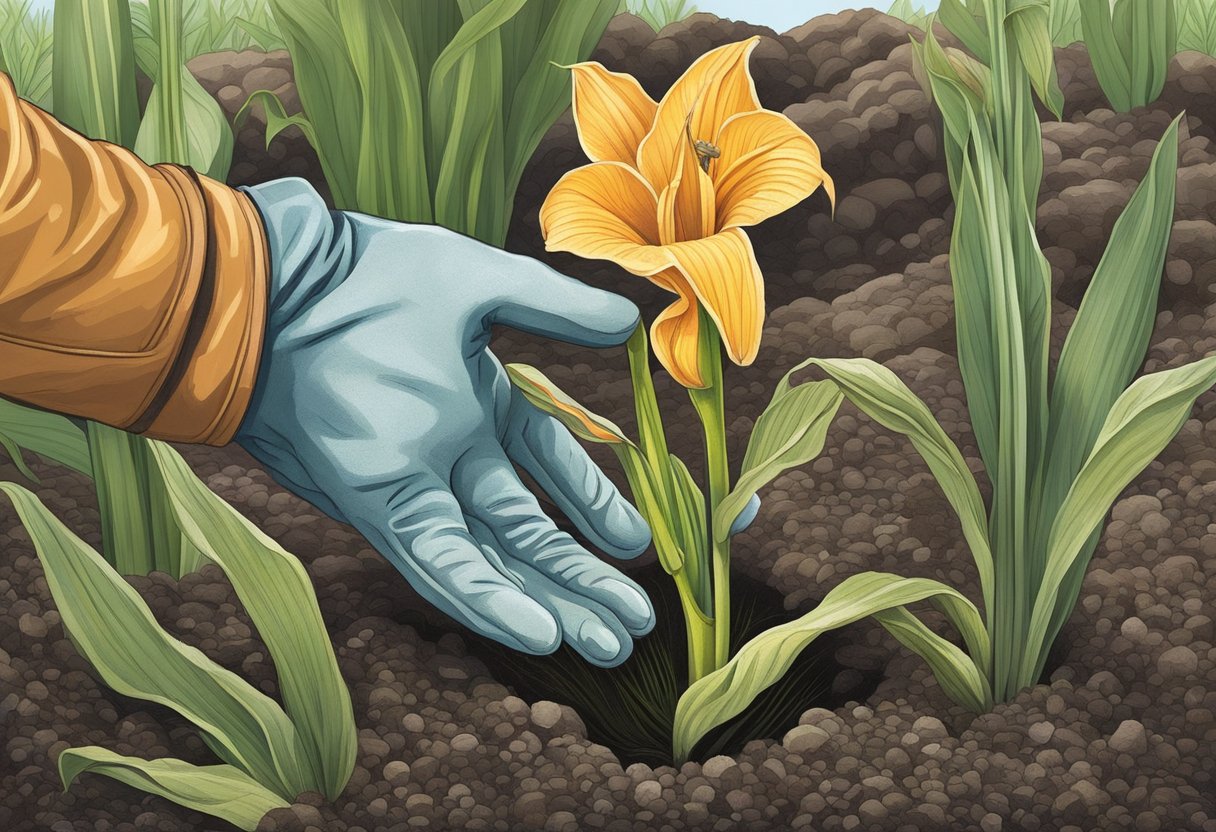
As winter comes to an end, it’s time to start thinking about replanting your canna lilies. Here are some tips to ensure a successful replanting process.
Timing and Soil Temperature
The best time to replant canna lilies is in the spring, once the threat of frost has passed. It’s important to wait until the soil temperature has warmed up to at least 60°F (15°C) before replanting. This will ensure that the rhizomes will start growing properly.
Dividing and Propagating Rhizomes
Before replanting, it’s important to divide and propagate the rhizomes. This will help to ensure that the canna lilies will continue to bloom and thrive. To do this, carefully dig up the rhizomes and separate them into sections, making sure that each section has at least one “eye” or growing point.
Once you have divided the rhizomes, you can propagate them by planting them in a well-draining soil mix. Make sure to keep the soil moist, but not waterlogged, and place the pots in a warm, sunny location.
When replanting the canna lilies, make sure to choose a location that receives full sun and has well-draining soil. Dig a hole that is slightly larger than the rhizome and place it in the hole, making sure that the “eye” is facing up. Cover the rhizome with soil, making sure that it is level with the ground.
By following these tips, you can ensure that your canna lilies will continue to bloom and thrive year after year.
Common Challenges and Solutions

Preventing Rot and Infestations
During winter, canna lilies are susceptible to rot and infestations. The primary cause of rot is excess moisture, which can lead to fungal growth and decay. To prevent rot, it is essential to ensure that the soil is well-drained and not waterlogged. One way to achieve this is by planting the canna lilies in a raised bed or adding organic matter to the soil to improve drainage.
Infestations by pests such as spider mites, thrips, and aphids can also be a problem during winter. These pests can cause damage to the leaves and flowers of the canna lilies, affecting their overall health and appearance. To prevent infestations, it is essential to keep the plants clean and free of debris. Regularly inspecting the plants for signs of infestation and treating them promptly can also help prevent the spread of pests.
Protecting from Extreme Cold
Canna lilies are tropical plants that are not well-suited for colder regions. Exposure to extreme cold can cause damage to the leaves and bulbs, leading to stunted growth or even death. To protect the canna lilies from extreme cold, it is essential to provide them with adequate insulation.
One way to do this is by covering the plants with a layer of mulch or straw. This will help to insulate the soil and protect the bulbs from freezing temperatures. Another way to protect the plants is by covering them with a frost cloth or blanket. This will help to trap heat and prevent the plants from freezing.
In conclusion, canna lilies require special care during winter to prevent rot and infestations and protect them from extreme cold. By following the tips outlined above, gardeners can ensure that their canna lilies remain healthy and vibrant throughout the winter months.
Frequently Asked Questions

How should I protect my canna lilies when the temperature drops?
Canna lilies are generally hardy in USDA zones 7-11 and can handle some frost. However, if temperatures are expected to drop below freezing, it’s best to provide some protection. Covering the plants with a thick layer of mulch or straw can help insulate the soil and roots. You can also use frost blankets or burlap to cover the plants themselves.
What is the best way to overwinter canna lilies indoors?
If you live in a colder climate, you may need to dig up your canna lilies and bring them indoors for the winter. To do this, wait until the foliage has died back and then dig up the bulbs. Clean off any excess soil and let them dry for a few days. Store the bulbs in a cool, dry location, such as a basement or garage, in a container filled with peat moss or vermiculite.
When is the appropriate time to cut back cannas before winter?
Once the foliage has died back naturally, it’s safe to cut back the canna lilies. This usually happens after the first frost or when temperatures consistently drop below 50°F. Cut the foliage down to about 4-6 inches above the soil line.
Can I leave my canna lilies in pots outside during winter?
If you live in a mild climate, you can leave your canna lilies in pots outside during the winter. However, if temperatures consistently drop below freezing, it’s best to bring them indoors or provide some protection. You can also bury the pots in the ground to help insulate the roots.
What steps are involved in separating canna lily bulbs after the growing season?
To separate canna lily bulbs, wait until after the foliage has died back and then dig up the bulbs. Gently separate the bulbs by hand or with a sharp knife, making sure each bulb has at least one eye or growing point. Let the bulbs dry for a few days and then store them in a cool, dry location until it’s time to plant them in the spring.
At what point in the year do canna lilies typically start to regrow?
Canna lilies typically start to regrow in the spring, once temperatures consistently reach 50°F or higher. However, the exact timing can vary depending on your climate and growing conditions. Be patient and wait for new growth to emerge before watering or fertilizing your canna lilies.

